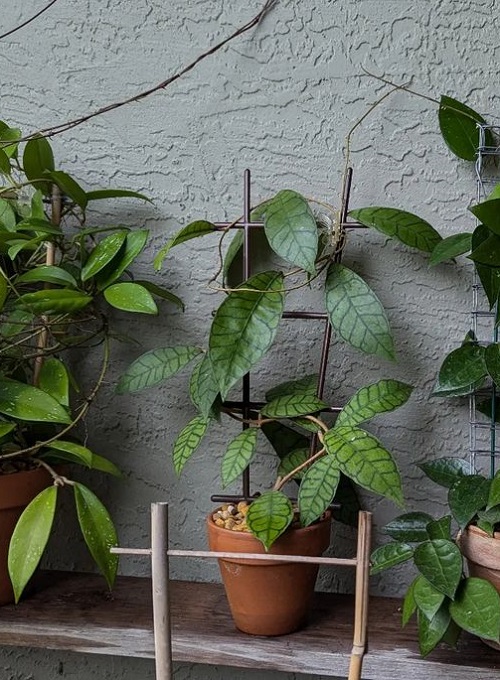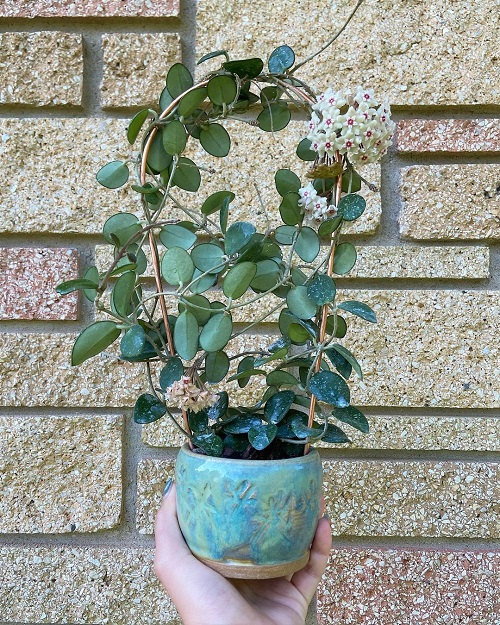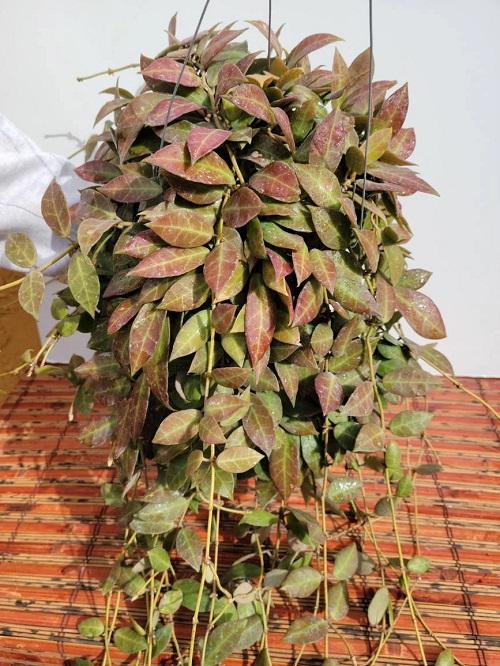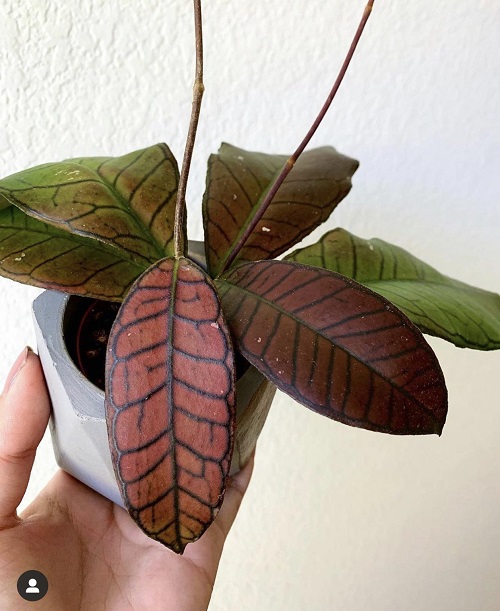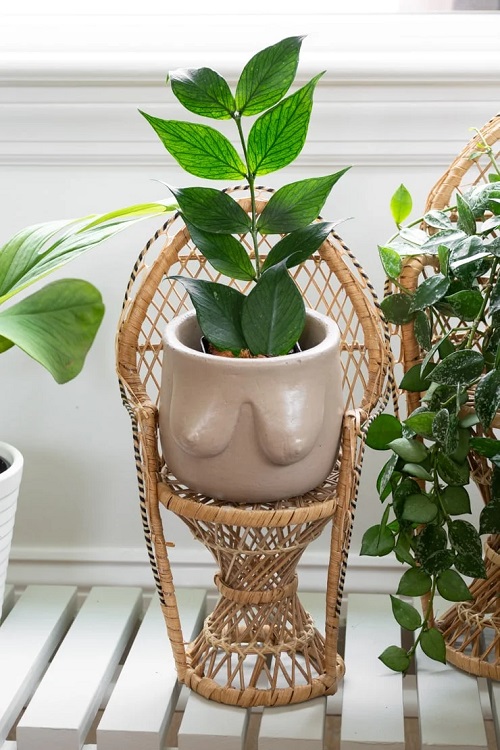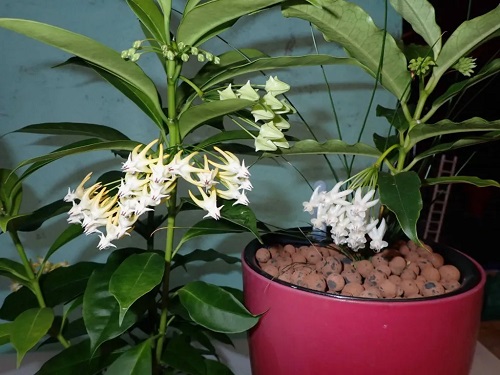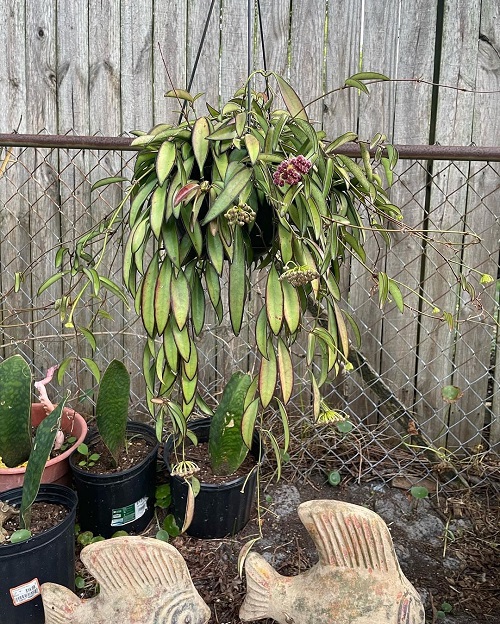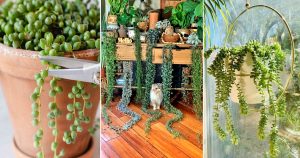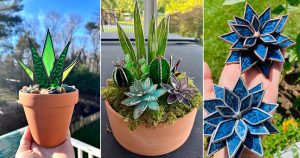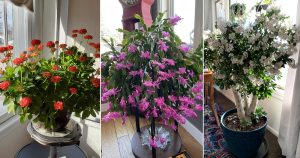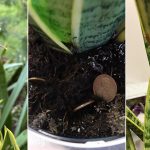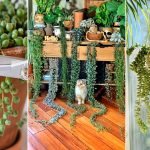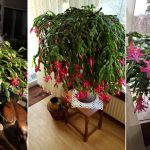A treasure trove overflowing with rare and exotic Hoya Varieties is waiting to be explored. You are in the right place. Check out!
For gardeners seeking something extraordinary, the world of Hoya varieties awaits! It contains over 500 species with unique star-shaped blooms, crystal-like crown centers, and sublime beauty. Find the perfect pick for your garden or indoor space!
Rare Hoya Varieties
1. Hoya callistophylla
Hoya callistophylla is found in hilly forest areas at elevations between 300 and 600 m. The name “Hoya” is derived from Thomas Hoy, a gardener from the Duke of Northumberland. In contrast, the species name “callistophylla” means “most beautiful leaf,” referring to the attractive venation of its leaves.
This variety of hoya is rare and unique due to its exceptional foliage. It grows on other plants (epiphyte) with oblong, thick, dark green leaves and displays venation with rough margins. Stems are smooth and branched and have clusters of mildly fragrant, pale yellow, brownish gold or cream blooms.
2. Hoya Sp. ‘Estrella Waterfalls’
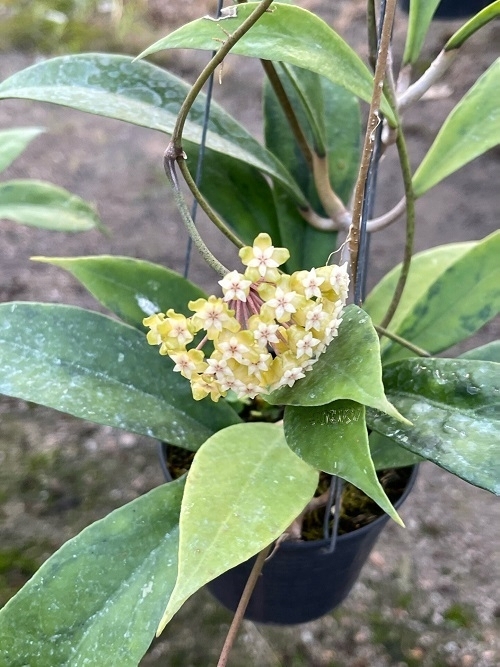
You must have heard this rare variety’s name from the people who are searching for it, but it is hard to find. Hoya Sp. ‘Estrella Waterfalls’ is noted for its strong fragrance of buttery yellow flowers and has at least 35 flowers per umbel, so this plant is like a cherry on the cake for garden enthusiasts.
Its leaves are large and green to dark brown. The plant seems resilient, tolerating drought, overwatering, and temperature shifts easily. However, it has not yet been researched well, so limited information is available.
3. Hoya ‘Mathilde’
This cultivar is a mix of H. carnosa and H. serpens, containing the best qualities of both; it grows easily as carnosa and is resilient like serpens. It has waxy, trailing foliage with semi-succulent, dark green rounded leaves adorned with light silver splashes.
Hoya ‘Mathilde’ does not need regular irrigation; weekly or biweekly irrigation would be ideal. Needs consistently bright, indirect light. If growing indoors, place east or south-facing windows with a well-draining, lightweight root medium soil mix. And it loves high humidity, too!
4. Hoya ‘Rebecca’
Introduced by Antone Jones by crossing between Hoya lacunosa Langawi Island x Hoya obscura. It is known for its fast-growing nature, blooming rapidly just after planting, and color-changing leaves—quite a rare variety with unique traits!
Produces fuzzy pink flowers with a sweet smell in spring and summer. Hoya Rebecca is a tropical plant that prefers warm, humid climates and hates cool temperatures. If growing indoors, keep it at a low temperature and with well-draining soil, good aeration in bright indirect light!
5. Hoya Fitchii
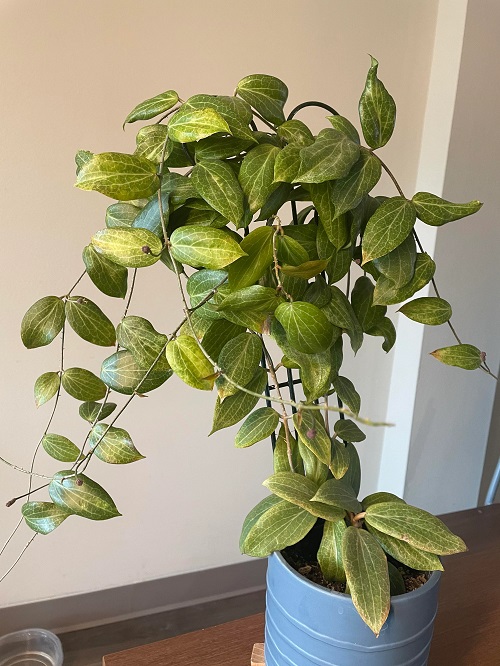
Native to the Philippines from the Asclepiadaceae family, it was founded by Charles Marden Fitch. It is an easy-care plant with a resilient nature. It must be kept in areas that receive partial sunlight and watered only when the top inch of soil feels dry.
However, if you live in less sunny areas, an east or west-facing window would be ideal. In winter, it needs more sunlight, at least 6 hours. The Hoya Fitchii flowers show great variation in color, from yellow to orange to pearl pink. Planting this one could be tedious for new gardeners, but its beauty takes the pain away!
6. Hoya Sp. ‘Gunung Gading’
The national park is considered the home of various hoya species, similarly Hoya Sp. ‘Gunung Gading’ was first noticed in Gunung Gading National Park in Sarawak, Malaysia. Most striking feature of this is its large decorative leaves with pronounced leaf veins, which remain even after the leaf becomes old, rather than other varieties that become lighter with age.
The Hoya Sp. ‘Gunung Gading’ has pink blooms with a non-floral fragrance. It is a slow-growing plant that needs high maintenance, indirect sunlight, less water, 65-80% humidity, and a 60-95 F temperature range; more than this will harm the plant.
Exotic Hoya Varieties
7. Hoya Serpens
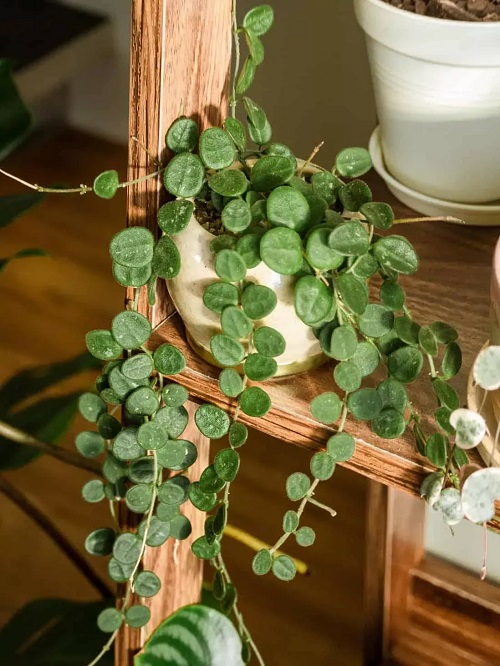
This exotic, perennial species from the Himalayas grows in various parts of Asian countries, such as Indonesia, Malaysia, and Thailand. It was discovered in the 1880s by Joseph Dalton Hooker.
Gardeners love this houseplant because of its beautiful foliage, even when it does not bloom. The Hoya serpens is a vine-like plant that is usually smaller in size. It is known for its consistent blooming, repeatedly with pale green flowers that emit a mild fragrance (remaining unnoticed). However, a bunch of flowers opening simultaneously may make the smell stronger!
8. Hoya Polyneura
It is also known as fish-tail Hoya because its thin, oval leaves appear similar to a fish’s tail. Native to Southeast Asia, it grows as an epiphytic plant around trees or rocks. It produces beautiful star-shaped flowers and is a great hanging plant! Needs little water and soil with good drainage.
Hoya Polyneura is a stunning addition indoors and outdoors if you keep it in a place with bright indirect light the entire day, followed by a few hours of exposure to the early morning sun. This means you need to relocate it from time to time. The north window will be great while avoiding direct afternoon sun contact. In the morning, you can keep it near the east-facing window.
9. Hoya Macgillivrayi
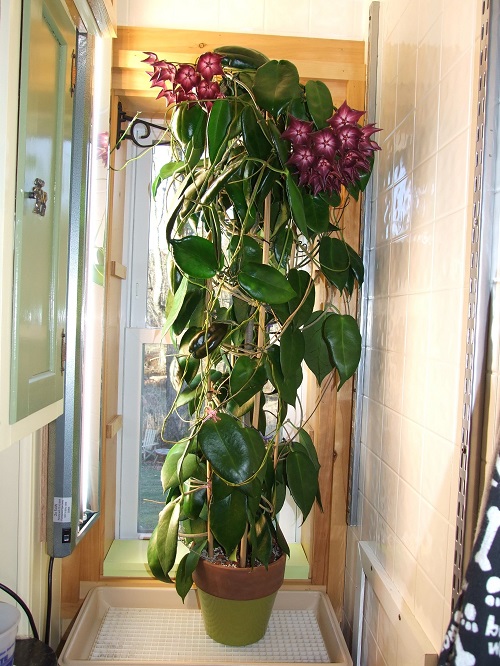
Grown as an ornamental plant! It grows rapidly with oval pointed leaves attached to twining stems, flower umbels, and hanging fruits.
Hoya Macgillivrayi can easily thrive in warm, humid areas with good drainage soil. Needs regular watering, so you must water it once every two days. It usually blooms after two years. You can propagate it by layering. Just, prevent your plant from sudden temperature shifts.
10. Hoya Rotundiflora
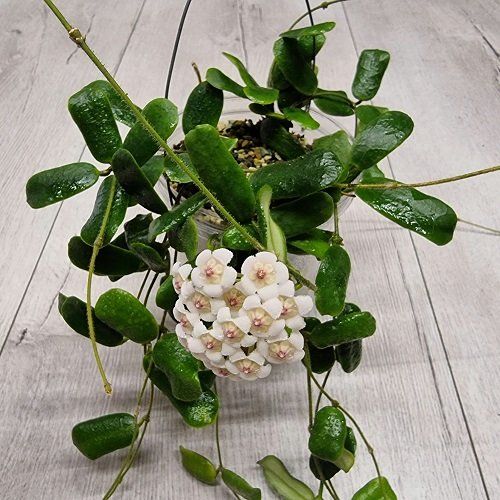
It produces medium-sized thin leaves on dangling stems and can grow as a climber plant. Usually, can reach up to 12 feet long and 20 feet wide. Known for its multiple star-like flowers covered with tiny hairs, offering a fuzzy look. They emit a strong, sweet aroma.
However, when you have this one, you must keep an eye on aphids, spider mites, scales, and thrips! Hoya Rotundiflora prefers high humidity and bright indirect lights. But, it hates overwatering and over-fertilizing.
11. Hoya Krimson Princess
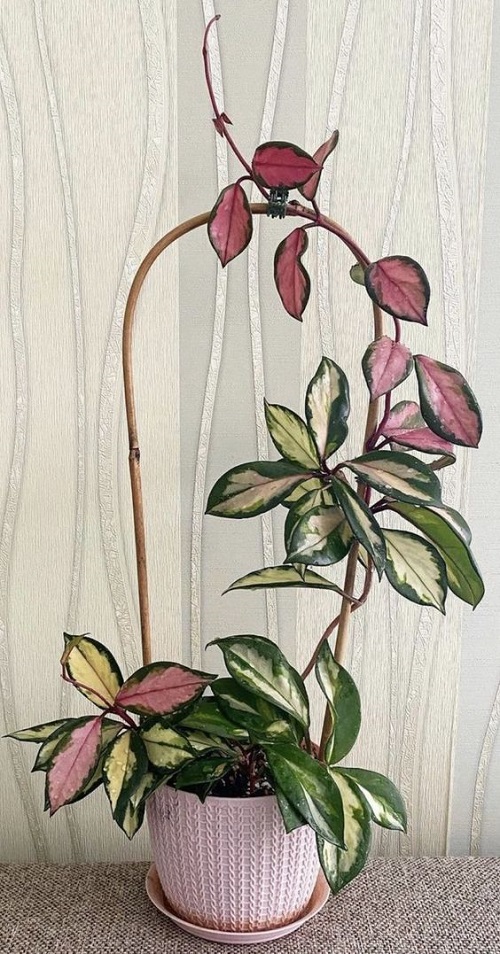
It is a cultivar of Hoya carnosa, also called the honey plant Krimson Princess. Native to East Asia and Australia, it can easily adapt to tropical and subtropical environments. Offers variegated leaves and stunning star-shaped blooms.
Hoya Krimson Princess is a safe succulent plant that grows upwards with support and can also trail downwards from hanging baskets. Outdoors will grow a bit longer (12-18 feet) than indoors (3-4 feet).
12. Hoya Imperialis
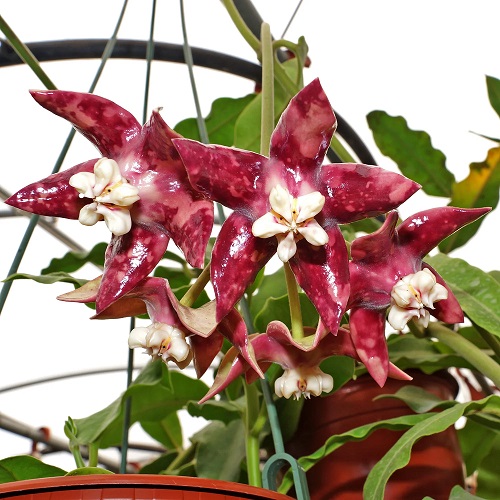
Hoya Imperialis is a vigorously growing plant that produces umbels of waxy flowers, 12 in one go, that last 15 days. The blooms have a weak or negligible fragrance. Overwatering increases the chances of root rotting, so avoid it! In the dormancy phase, which begins in the fall and continues until the end of winter, irrigate moderately.
The interesting part of the term “imperialis” means the empire or emperor, which signifies the group of its flowers. It needs bright, indirect sunlight; otherwise, you will see the plant becoming leggy and reducing in blooms and leaves. The best thing? It is non-toxic to pets and humans.
13. Hoya Multiflora
Hoya Multiflora, commonly known as shooting star, was founded in Indonesia and is popular for having multiple flowers, up to 30-40 inflorescences.
You can grow this plant easily in a medium-sized pot. Avoid deep containers, as their shallow roots do not need repotting. The easiest way to propagate it is by stem cutting in the growing season, which is spring and summer.
14. Hoya Bella
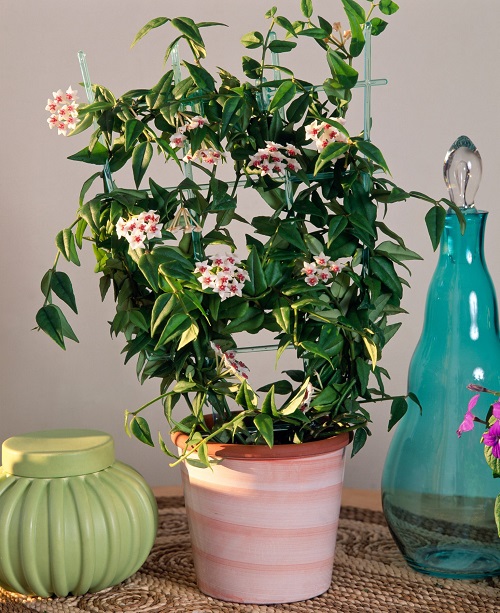
Hoya Bella is popular for its vining stems adorned with small glossy green leaves, white flowers with pink/red crowns, and mild fragrance.
Endemic to Southeast Asia rainforest and thrives in indirect light, well-draining potting mix, little water, a bit of pruning, and fertilizer in the growing season. Keep it away from direct sun, cold drafts, and sudden temperature shifts. Regular misting will help maintain a healthy lifestyle.
15. Hoya Wayetii
Flowering plant with long, slender, succulent leaves that gain red margins when exposed to required sunlight. People prefer it as an ornamental plant to enhance their indoor aesthetics.
Hoya Wayetii is also famous for its air-purifying abilities, filtering out toxins from the air. It can be grow in Mediterranean gardens, hanging baskets, patios, and containers.

